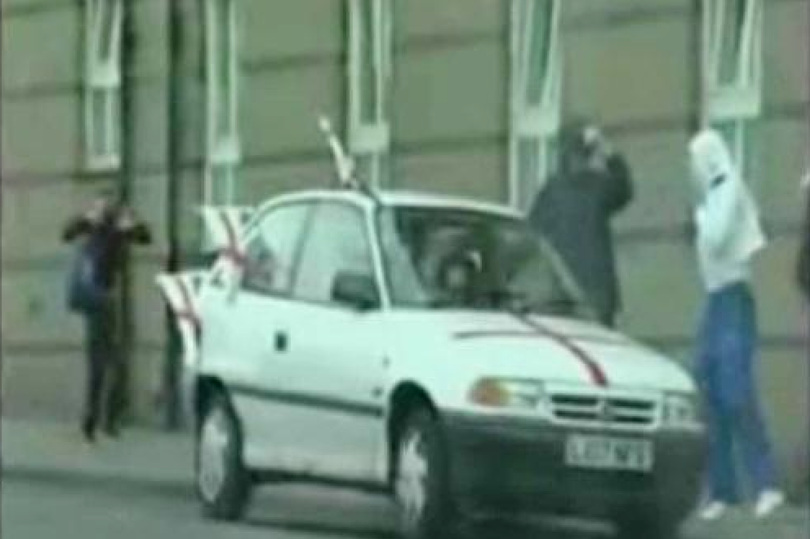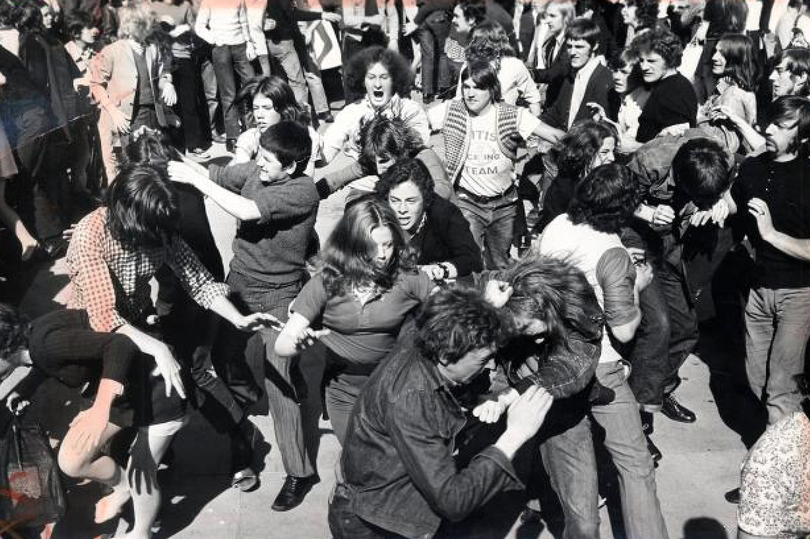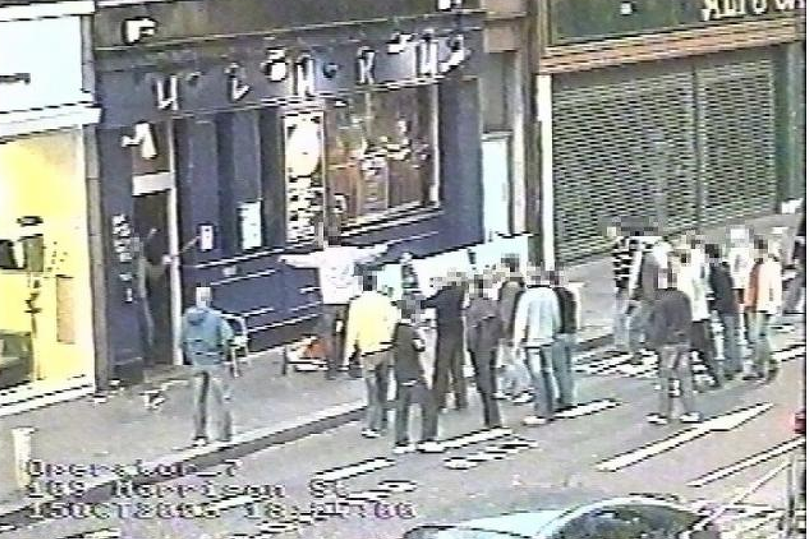The Edinburgh housing schemes that became hotbeds for recruiting teens into gangs

From the notorious razor gangs to the recent portrayal of the Billy Boys in the hit BBC series Peaky Blinders, Glasgow's street mobs have long been infamous across Scotland.
Yet, Edinburgh has carved out its own grim legacy of gang violence over the years, with a lineage of brutal hoodlums emerging from its streets.
The evolution of gang culture within some of Edinburgh's youth has transitioned from fierce clashes at travelling fairs to flaunting their vile deeds in YouTube videos for all to see.
READ MORE - Family share 'possible sighting' of missing Jay Slater in Tenerife village
READ MORE - The delay that 'cost police seven years' in hunt for Edinburgh World's End murderer
Many of today's infamous gangland figures can trace their roots back to these early groups.

Back in the 60s and 70s, Edinburgh was home to numerous gangs fiercely defending their territories, with around 20 significant "teams" known to be active, reports the Daily Record.
Areas hit harder by poverty, like Pilton, Broomhouse, and Niddrie, became hotbeds for recruiting impressionable youths into these gangs.
That time period witnessed the rise of notorious gangs such as BarOx, Clerry Jungle, and the Young Gillie Team into public awareness.
A one-time gang member reminisced about those chaotic times, saying: "Most of us gang members did it for kicks. Fighting made us feel alive."

He further explained: "Mostly we fought because we were there. Some folk say it was about meaningless things like territory and to some extent that was true."
"If another gang wandered into your turf, you chased them to hell and gave them hell if you caught them. But we fought anyway, even when there was no territorial dispute."
"Often we would actually arrange a joust, meeting in a city centre car park or stretch of waste ground. When the fairground came to Waverley at Christmas, we would turn up in numbers knowing fine well other teams would be there and we'd have a major battle."
"We didn't give a f*** about the other folk just there for the shows. This was our city and fighting was our type of entertainment."
Gang fights would erupt in iconic city spots like Princes Street Gardens, leaving locals and tourists alike in fear.
The 1971 cinematic release of 'A Clockwork Orange', with its stark portrayal of youth violence in a dystopian society, had a profound impact on Edinburgh's gang culture before being pulled from theatres due to concerns it was sparking real-life imitations.
Some gang members even adopted attire reminiscent of the film's violent main characters.
As Edinburgh transitioned into the 1980s, the heroin epidemic took hold, leading to a spike in overdoses and a devastating AIDS crisis.
Prominent figures from the gang scene fell victim to this wave of destruction.
Meanwhile, others transitioned from street brawls to the football casuals' mayhem that defined the era's hooliganism.
Yet, a few evolved from rough-and-tumble street fighters to hardened criminals, capitalising on the burgeoning illicit drug trade.
Among them, George "Dode" Buchanan stands out as a notorious figure who crossed over into the realm of organised crime.
A man who was a member of the Young Niddrie Terror gang since his teenage years, was convicted in 1974 for attempting to murder a rival gang member.
In 1987, he was sentenced to 12 years in prison for his role in stealing £2million worth of pharmaceutical heroin from the MacFarlan Smith factory in Gorgie.
The gang managed to get their hands on the diamorphine through a cleaner working at the plant the only factory in Europe licensed to produce the drug and subsequently flooded the capital's streets with the haul.
He found himself back in court in 2004 facing charges of heroin trafficking after police discovered £90,000 hidden in his loft.
Although he was acquitted on a not-proven verdict, he was ordered to forfeit £200,000 under the Proceeds of Crime Act.
In 2011, he was sentenced to five years in prison after being found guilty of running a heroin-dealing operation in Edinburgh.
As technology advanced, it began to influence the dynamics of inter-gang warfare.
Street fights were increasingly coordinated via mobile phone and soon on early social media platforms like Bebo.
By the mid-2000s, police were dealing with highly organised brawls involving hundreds of youths from rival gangs, often armed with an assortment of weapons.
Knives, baseball bats, bricks, wooden stakes, and metal poles were brandished during these meticulously planned confrontations.
The Muirhouse Casual Fighters gained particular infamy around this time for showing up in large numbers armed with golf clubs or blades.
Bitter rivalries, often fuelled online, led to confrontations between groups of up to 100 youths.
The car park behind the Omni Centre, beside the Corstorphine Retail park and in the Meadows, along with locations in Pilton and Muirhouse, were among the favourite haunts for these troublemakers.
Previously, clashes between gangs from different regions were typically linked to football hooligans as travelling fans journeyed to other towns and cities for matches.
However, with the advent of social media, mobs spread across Scotland could provoke each other and arrange meet-ups for brawls.
In 2008, members of the Edinburgh Young Team boasted about organising fights with Glasgow gangs and Young Raploch Slade from Stirling.
One member gloated at the time: "We're going to Stirling to fight the boys from the Raploch. We're taking 80 to 100 through on the train.We'll divide between Waverley and Haymarket stations so the police don't spot us."
Police sought Asbos against members of the EYT after they were accused of terrorising the Princes Street area with violent attacks and drug dealing.
Groups of up to 50 youths, aged 15 to 18, had been congregating around the St James Centre and Princes Mall, severely assaulting an innocent Spanish tourist in one incident.
The old gang names and reputations are now maintained by tech-savvy youths who use Facebook and YouTube to brag about their presence rather than spray-painting graffiti tags on walls and buildings.
Online feuds and vendettas often escalate, fostering deep-seated animosity between groups before they even meet in person.
Some gangs even use Facebook to mock the police. A gang of youths from north Edinburgh was responsible for hundreds of motorbike thefts during the 2010s, posting pictures and videos of their joyrides on the stolen bikes.
In 2016, a study by Edinburgh University revealed that the number of street gangs in Scotland was decreasing, while youth offending had also significantly dropped over the past ten years.
The remaining gangs are often more about expressing territorial pride than facilitating criminal activities or violence, according to the researchers.
However, despite the declining numbers, the allure of gang life and the suffering it causes remains all too real for some.

 Yahoo News
Yahoo News 
